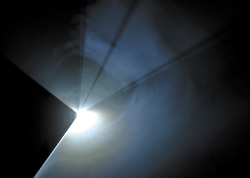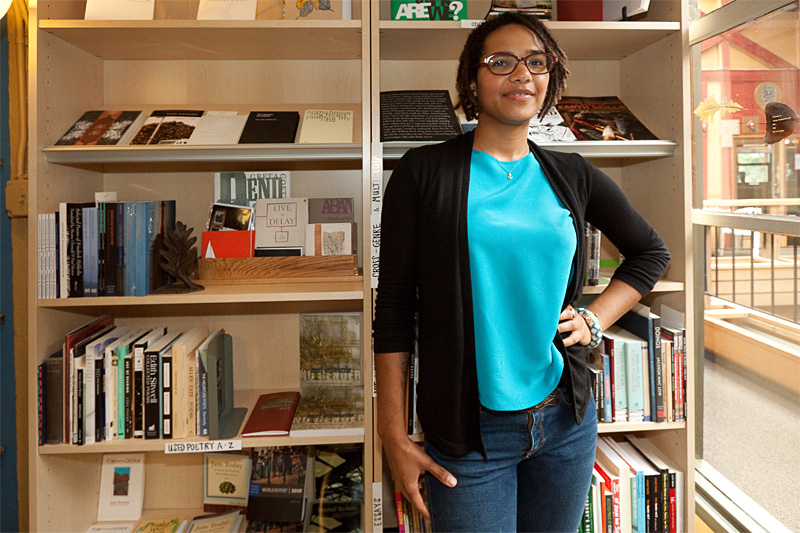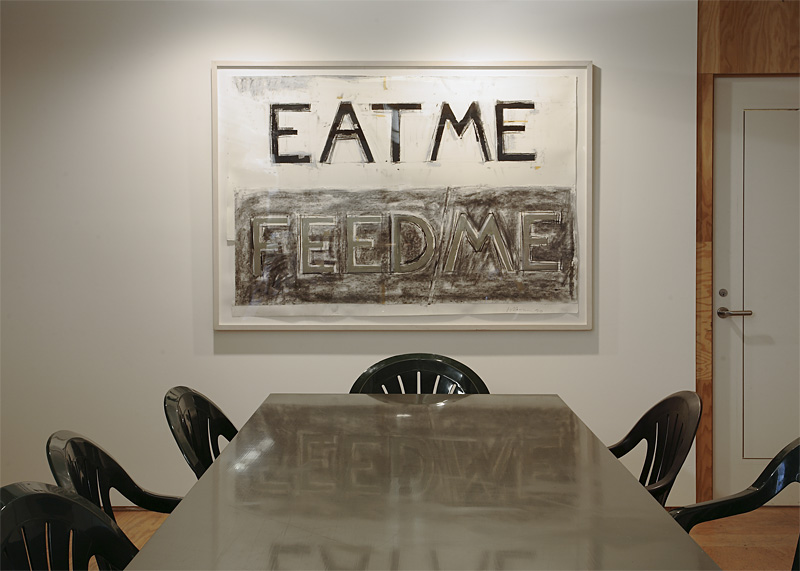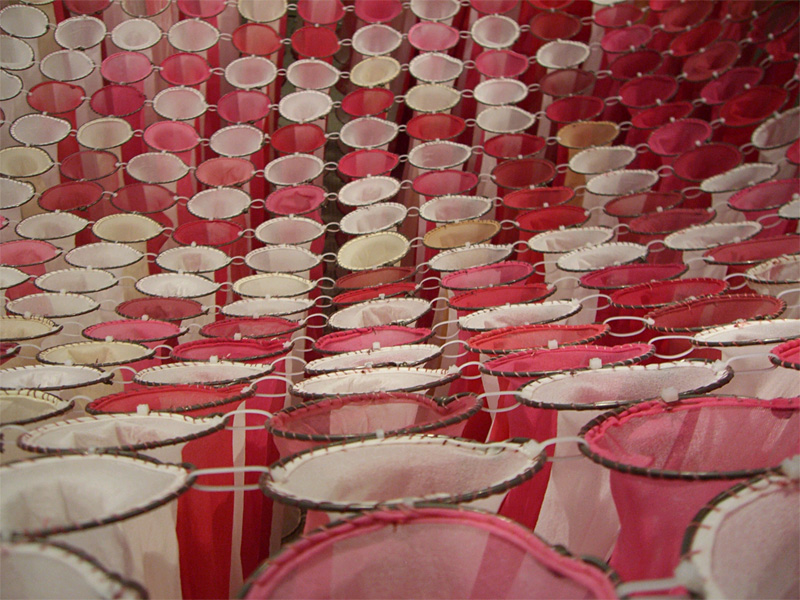The new group show at Western Bridge purports to be about death and decay. But when I visited “Insubstantial Pageant Faded” (named after a line from Shakespeare’s The Tempest), the mood was not so dark as you might expect, and the art, not quite so still. This space was populated with kids playing in movie snow and dancing in the light show.
Before you even get inside the gallery, there’s something to play with: Jeppe Hein’s Ice Cube. Fifty centimeters on each side, the cube sits atop its own bubbling rivulet, melting under the touch of our hands. As the gallery text explains, the cube begins at rational right angles, subsequently melting through less predictable forms. (It will be replaced weekly.) A slick, soft-cornered sculpture, it’s a beautiful thing to look at, but as one not-so-small person noted, “You can touch it, but it hurts.”
Inside the main gallery space sits a 1979 Porsche 928 with its lights on, accumulating a hillock of snow. Plastic flakes fall from a mechanized box above, producing a convincingly slow accumulation. This piece by Jordan Wolfson is called Nostalgia Is Fear, and it brought me back to the childhood pleasure of waking to a snow day, the familiar post-storm hassle of having to scrape a car clean to get inside it. But it also reminded me of last winter’s Kim saga, in which a family got trapped in the snow on a drive from Seattle to Grants Pass, Ore. Nostalgia may be a mild form of grief, and here, the car is being buried. No one’s inside, and yet you worry about the battery dying, those lights going out. I wonder how much snow will accumulate by the time the exhibit closes on Dec. 21. Will it fill the whole gallery space?
Anthony McCall’s slow-motion, fog-decorated light show, Doubling Back, occupies the back space and tempts you to step inside. You put your hands in the stream of light, interrupting the slowly moving, curved lines projected on the wall. A fog machine pumps moist air into the room, which swirls in the light, making it seem nearly solid; if you blow on it, the lit fog will spin. This playful work, with echoes of dance-floor special effects, allows you to interact with light made physical. Step inside the beam of light, and the rest of the room disappears; step out of the light, and to those still inside, you are invisible.
Projected in green onto the floor, Alex Schweder’s video, 7 1/2 Second Season (10 Year Old House), is a working model for a great idea: As a house decays, it releases seeds for a garden that then swallows the home itself. But this video of blooming shrubs obscuring a floor plan (all the color of old computer-screen type) doesn’t quite satisfy; I want to see the actual house.
Much more evocative is Dan Webb’s Small Cuts, 40 framed portraits depicting the carved wooden bust of a man. Throughout the series, we watch the man grow from young to old (or well to sick) until we see a hollow-eyed skeleton, a graceful wisp of wood, and then, finally, nothing. In the center of the room, surrounded by three walls of portraits, is a Plexiglas box of shavings, all that remains of the wood that formed the sculpture. You may remember this piece from Webb’s show last December at Howard House. It was created in honor of Webb’s brother, who had recently passed away. It’s hard to look at this series, and I wonder if the artist misses those sculptures, those beautiful skulls, or if it feels right, at the end, to having nothing left. A box of scraps is all you get, and that, really, is sawdust.








